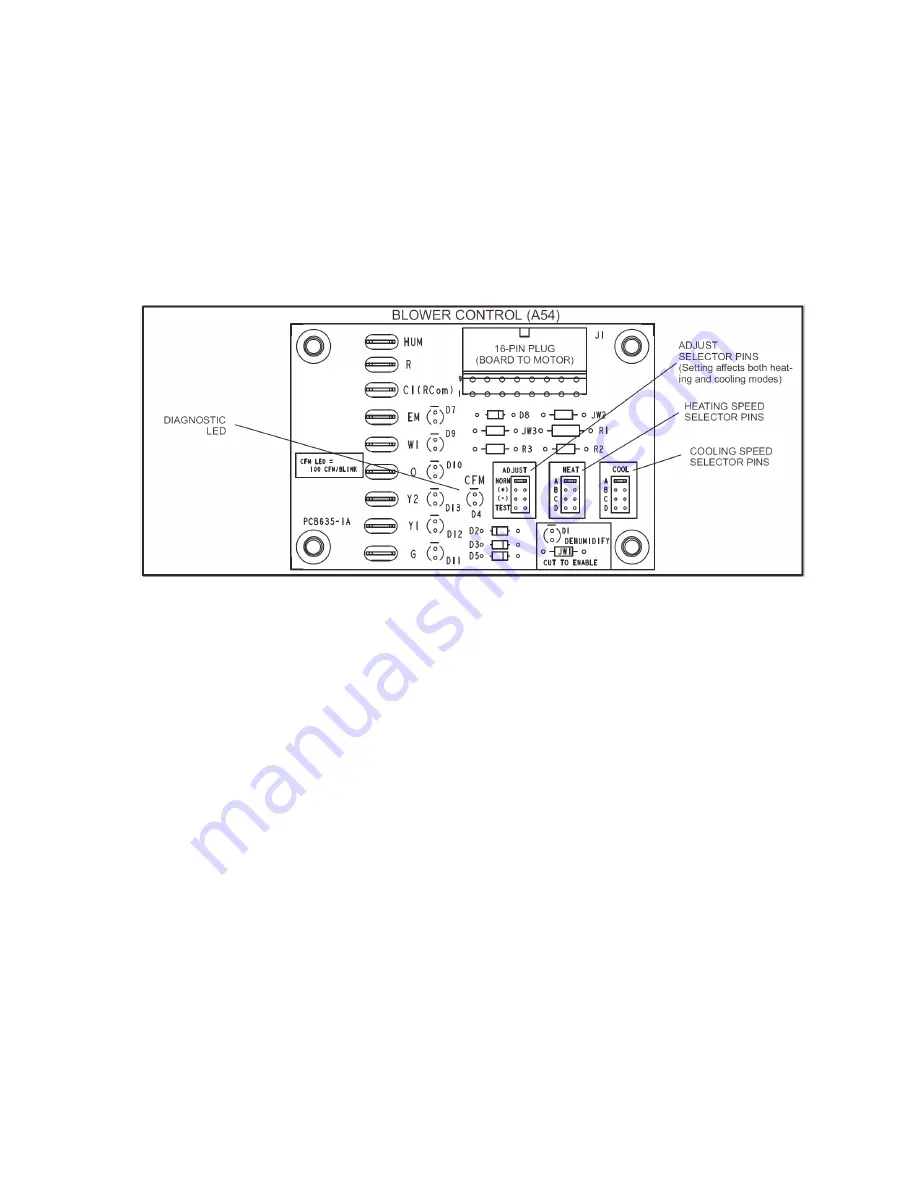
Page 24
demand. This minimizes noise and eliminates the initial
blast of air when the blower is initially energized.
ADJUST
The ADJUST pins allow the motor to run at normal speed,
approximately 10 percent higher, or approximately 10
percent lower than normal speed.
The TEST pin is available to bypass the blower control
and run the motor at approximately 70 percent to make
sure that the motor is operational. This is used mainly in
troubleshooting. The G terminal must be energized for the
motor to run.
COOL
The COOL jumper is used to determine the CFM during
cooling operation. In AC units, this jumper selection is
activated for cooling when Y1/Y2 is energized. In heat
pump units, the selection is activated for cooling when Y1/
Y2 and O are energized.
The blower motor runs at 80 percent of the selected air
flow for the first 7-1/2 minutes of each cooling demand.
This feature allows for greater humidity removal and saves
energy.
Figure 12.
In the cooling mode, the blower control delays blower
operation for 5 seconds after the compressor starts. The
blower continues to operate for 90 seconds after the
compressor is de-energized. The delay is 5 minutes on the
first start.
HEAT
The HEAT jumper is used to determine CFM during electric
heat operation only. These jumper selections are activated
only when W1/W2 is energized.
CONTINUOUS FAN
When the thermostat is set for “Continuous Fan” operation
and there is no demand for heating or cooling, the blower
control will provide 50 percent of the COOL CFM selected.
DEHUMIDIFICATION
The blower control includes an HUM terminal, which
provides for connection of a humidistat. The JV1 resistor
on the blower control must be cut to activate the HUM
terminal. The humidistat must be wired to open on humidity
rise. When the dehumidification circuit is used, the variable
speed motor will reduce the selected air flow rate by 25
percent when humidity levels are high. An LED (D1) lights
when the blower is operating in the dehumidification mode.
Cooling System
The cooling system is factory-charged with HFC-R-410A.
The compressor is hermetically sealed and base-mounted
with rubber-insulated bolts.
Cooling
When the thermostat calls for cooling, R is closed to Y1
and O (see the wiring diagrams starting on Page 19).
This action completes the low voltage control circuit,
energizing the compressor, condenser fan motor, and
blower motor. Second-stage cooling is initiated by the
thermostat energizing Y2 in AC units and Y2 and O in heat
pumps.
Unit compressors have internal protection. In the event there
is an abnormal rise in the temperature of the compressor,
the protector will open and cause the compressor to stop.
The thermostat automatically closes the R to G circuit,
which brings on the indoor blower. Upon satisfying cooling
demand, the thermostat will open the above circuits and
open the main contactor, stopping the compressor and
outdoor fan. If the unit is equipped with a delay timer, the
blower will continue to operate for 60 to 90 seconds, which
improves system efficiency.







































